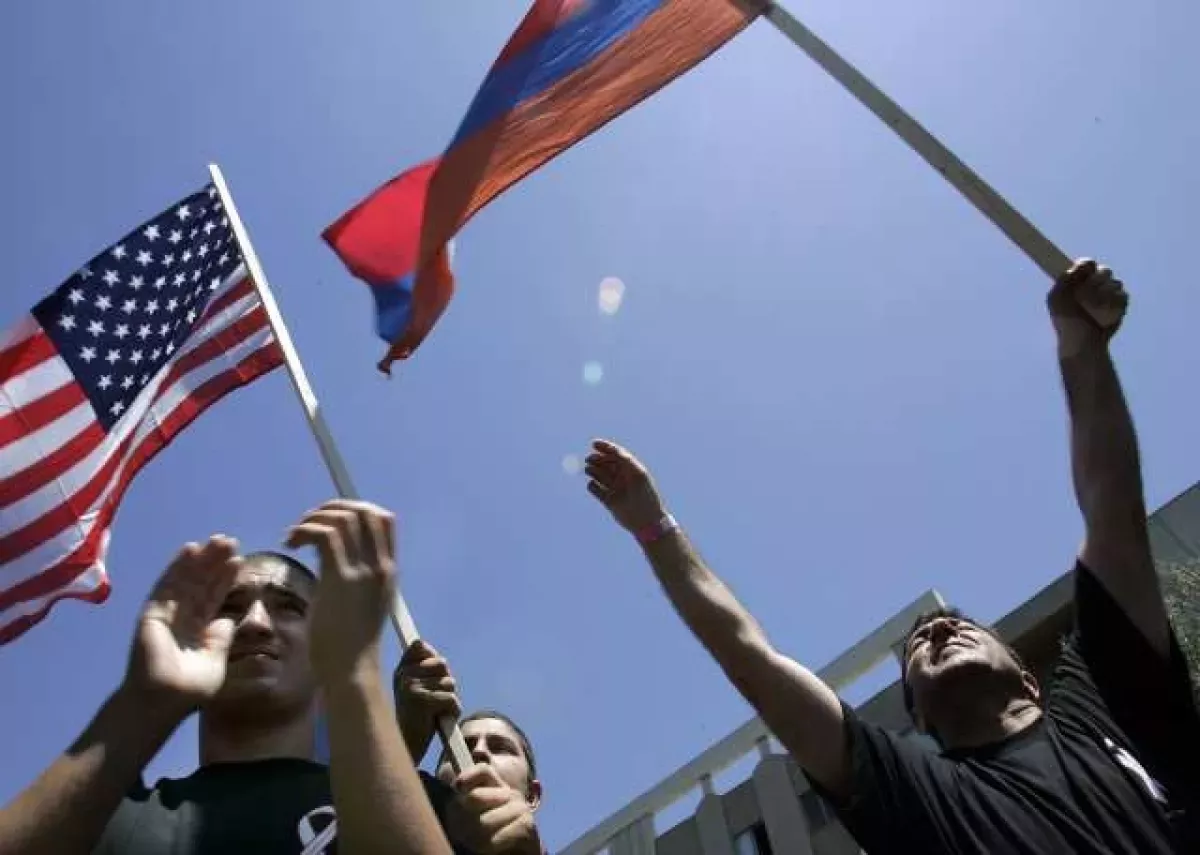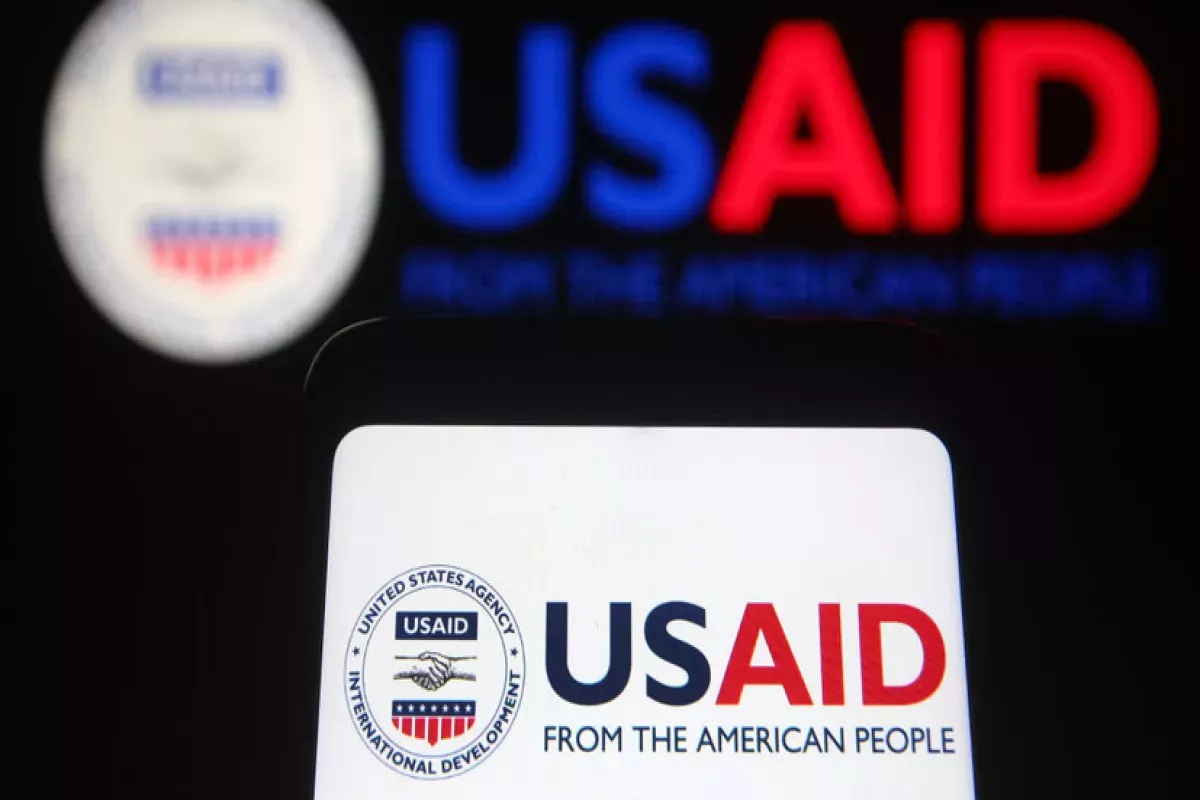Azerbaijan, the US, and the 907th Amendment: a political signal from the Pentagon? Expert analysis on Caliber.Az
The U.S. Department of Defense outlet Stars and Stripes published an article calling on Congress to fully repeal the 907th Amendment, thereby strengthening cooperation between Azerbaijan and the United States. Originally adopted under the influence of the Armenian diaspora during the height of the Karabakh conflict, the amendment still limits direct U.S. assistance to Azerbaijan.
Baku has long pushed for the removal of this legislative restriction, yet Congress has so far refrained from acting. This raises an important question: why? Could the recent article in Stars and Stripes be a subtle political signal, urging U.S. lawmakers to reconsider their stance toward Azerbaijan?
Caliber.Az consulted leading analysts to explore the implications and provide expert insights.

The Director of the Center for International Relations Analysis, diplomat Farid Shafiyev, noted that Azerbaijan has long sought the repeal of the 907th Amendment.
“However, fully repealing it is quite a complex matter. Suspending the amendment’s effect is one thing, but achieving its complete cancellation is quite another. We see similar cases with certain U.S. legislative acts adopted in relation to the Soviet Union in the 1970s that remain in effect today. For example, at the recent U.S.–Central Asia summit, the Jackson–Vanik Amendment, adopted in the 1970s and imposing certain restrictions on the USSR, was discussed. Its provisions are still formally in force because they were later extended to several former Soviet republics.
Sometimes the amendment’s effect was suspended or limited, but it was never fully repealed. Firstly, this requires securing a majority in both chambers of Congress. Secondly, it requires both Democrats and Republicans to be ready to vote for such a measure. As experience shows, such alignment happens very rarely,” the diplomat explained.
He believes that the Americans deliberately keep certain punitive measures “in reserve” — as a pressure tool that can be pulled from the political “pocket” when needed.
“Therefore, the 907th Amendment is undoubtedly one of those decisions made in 1992 that was completely unjust — at a time when part of Azerbaijan was under occupation.
Of course, under Trump, our relations have noticeably improved. However, whether it will be fully repealed remains an open question. As I said, this requires approval from both chambers of Congress — the House of Representatives and the Senate.
The problem, I think, lies primarily with the Democrats. Although among Republicans, there are also those who, for one reason or another, support the Armenian side or related initiatives. So, it’s unlikely that we will see a full repeal of the amendment in the near future. Although, of course, I would be glad to be proven wrong,” Shafiyev admitted.

American geopolitical and security expert, and editor-in-chief of The Washington Outsider, Irina Tsukerman, noted that the persistence of the 907th Amendment is due less to its practical significance and more to the symbolic and institutional inertia of U.S. policy.
“This amendment was adopted in the early 1990s, at a time when the Karabakh conflict was at its peak, and the Armenian diaspora was actively shaping the narrative of victimhood and seeking to secure legislative support for Armenia. Since then, the provision has become a symbol of Congress’s moral stance, and abandoning it now would be difficult — it would inevitably lead to accusations of betraying its own principles.
The amendment continues to exist because it has been embedded in the political balance between Congress and the executive branch. The White House gained the ability to bypass it through annual presidential waivers, thus maintaining flexibility in cooperation with Azerbaijan. Congress, in turn, retained a legal lever allowing it to limit aid if necessary and assert control over foreign policy.
In this setup, both branches of government found certain advantages — and that is precisely why no one is in a rush to disrupt the established balance.
The American governance system generally does not rush to repeal laws that can simply be ignored or neutralised through administrative tools. For legislators, it is far easier to leave an old mechanism in place than to explain to voters why a provision—perceived as a symbol of moral solidarity—needs to be eliminated. This is especially true for congressmen representing states with active Armenian communities, for whom raising the issue would inevitably spark media attention and accusations of cynicism.
Here, the logic of the status quo prevails. Any attempt to repeal the amendment would require hearings, votes, and open debates. For most members of Congress, this topic is not among their priorities, as voters are focused on domestic issues. Consequently, the incentive to initiate such a process is minimal.
Moreover, the symbolic value of the provision itself plays a significant role. For many American politicians, it has become part of the moral legacy of the post-Cold War era, when Washington sought to position itself as a protector of small nations. Repealing such a symbol would appear as a departure from these principles and as a triumph of pragmatism over idealism.

The diaspora factor also remains extremely significant. The Armenian community in the U.S. has built effective channels of influence—not only in both chambers of Congress, but also in think tanks and the media. This influence is not only maintained but reproduced from generation to generation, supported by a robust network of organisations and lobbying structures. For any politician, confronting this system means risking the loss of support in key constituencies and facing an organised campaign of criticism.
Meanwhile, the legal framework of the amendment has long lost its original relevance. Its practical effect is effectively frozen, yet its formal presence in legislation serves as a safeguard: Congress can reactivate it if the situation escalates. This ‘insurance’ is seen as a control mechanism, making it more convenient to preserve the amendment than to fully repeal it.
Moreover, the American bureaucracy is highly reluctant to set precedents for repealing laws without urgent necessity. Each such case opens the door to revisiting other acts, which is considered undesirable in Washington. It is far easier to leave the formal document in place than to signal a willingness to revise political memory and acknowledge the obsolescence of moral principles from past decades.
Finally, for any administration—regardless of party affiliation—this provision represents a convenient pressure tool that can be activated depending on the political context. Over time, it has become an element of strategic flexibility, allowing the White House to manoeuvre between the interests of Congress, the diaspora, and foreign policy priorities. No one is in a hurry to give up such a lever.
Thus, the 907th Amendment continues to exist not because anyone actively defends it, but because it does not interfere with actual practice while retaining symbolic and political value. For the American system of governance, that is sufficient for a law to remain in force for decades,” the editor explained.
Tsukerman believes that the main barrier preventing the repeal of the amendment remains the entrenched structure of interests that has developed in Congress over the decades of its existence.
“Lawmakers are not eager to give up a tool that allows them to control the implementation of foreign policy. Having such a provision enables them to demonstrate a moral stance to their electorate and maintain engagement on issues concerning the South Caucasus.
The second factor is the enduring influence of the Armenian diaspora, which possesses a powerful lobbying infrastructure. These organisations operate not only in politics but also in humanitarian, academic, and media spheres. They can mobilise public opinion and create an atmosphere of moral pressure on any politician advocating for the repeal of the amendment. When the reputational risks for a congressman outweigh the potential benefits, rational arguments lose their effectiveness.
The third obstacle is the absence of a clear coalition in support of repeal. Azerbaijan does not have comparable influence tools in the U.S., and American companies interested in energy cooperation act cautiously, avoiding direct political activity. As a result, proponents of repeal remain in the minority and cannot exert sufficient pressure on Congress.
The fourth barrier is procedural complexity. Any attempt to amend existing law requires coordination between committees, agreement on wording, and the conduct of debates. Against the backdrop of more pressing political priorities, these issues can easily be postponed indefinitely.

The fifth factor is related to internal competition among U.S. agencies. The State Department, the Pentagon, and USAID assess Azerbaijan’s strategic role and the sensitivity of the Armenian issue differently. The lack of a unified position within the executive branch makes any repeal initiative less persuasive to Congress.
The sixth barrier is media optics. Any attempt to repeal the amendment immediately triggers narratives of ‘moral decline’ and ‘betrayal of historical allies.’ The media tend to frame such steps emotionally rather than pragmatically, narrowing the space for political discussion.
The seventh factor is electoral calculation. For many congressmen, maintaining neutrality on this issue is a way to avoid unnecessary disputes in their districts. Armenian communities are highly politically active with disciplined electorates; losing their support could cost a mandate.
The eighth barrier is ideological inertia. U.S. foreign policy has for decades been built around the idea of moral leadership, support for democracy, and protection of small nations. Repealing the 907th Amendment would be perceived as a departure from these principles, creating internal dissonance for parts of the political class.
The ninth factor is the absence of broad public discussion. The topic of Azerbaijan and Armenia remains marginal in the U.S. media space, so politicians have little incentive to take risks for its reconsideration.
Finally, the tenth reason is the institutional habit of preserving legislative ‘relics.’ The amendment has become part of the U.S. political landscape and is perceived more as background than as an active tool. It does not cause problems, and thus survives according to the laws of bureaucratic self-preservation,” the analyst explained.
According to Tsukerman, the appearance of the article in the U.S. Department of Defense publication cannot be considered accidental.
“Such publications typically reflect internal discussions within the professional community and serve as a way to carefully bring them into the public domain. When a publication associated with military structures calls for a legislative review, it is almost always intended to gauge the reaction of political circles and public opinion.
The main purpose of such a signal is to prepare the ground for a potential policy change. Publishing in Stars and Stripes allows the initiative to be presented as driven by security and strategic necessity rather than as a political concession. This is especially important in the American system, where moral reasoning plays a significant role.
The article creates a context in which the discussion of repealing the amendment is no longer seen as an act of cynicism, but rather as a step towards strengthening regional stability. When such an idea is voiced in a publication aimed at a military audience, it gains additional weight and legitimacy.
For Congress, these signals act as an invitation to dialogue: legislators can refer to the opinions of military experts and security specialists, rather than their own political calculations. This reduces the risk of accusations of bias and makes the discussion safer.
The publication is also addressed to internal agencies. It demonstrates that within the defence and analytical communities there is a growing recognition of the need to reassess outdated instruments, thereby nudging the State Department and the White House toward a more proactive stance.
The Stars and Stripes article can be seen as a form of ‘soft reconnaissance by fire’: the authors and sponsors observe the reactions of various centres of influence and use these signals to assess how politically safe it is to advance the issue further.
Equally important is that the text is aimed at an international audience. It signals to U.S. allies and partners that Washington is considering a new, pragmatic approach rather than relying on historical relics, which strengthens confidence in American policy in the region.
Moreover, the publication sends a clear signal to Baku: the number of supporters for closer engagement in Washington is growing. This encourages Azerbaijan to intensify diplomatic contacts and demonstrate its reliability as a partner.
Finally, the very format of the publication underscores that decisions in American politics are never made abruptly. Before raising an issue to the level of Congress, the system conducts a series of trial steps. In this case, Stars and Stripes functions as a tool to test the ground and transmit the sentiments of the expert community to the legislative branch.
Thus, the published article truly serves as a political signal. It does not mean that a decision has already been made, but it clearly shows that the discussion has moved from a closed phase into the open—a first step toward changing the official course,” the expert concluded.








